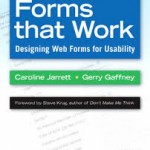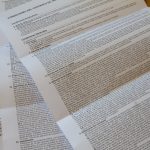Update, December 2008: this planned workshop was cancelled, and participants joined the “Inclusivity, Interaction Design and Culture” workshop instead Reading is a skill many of us take for granted. We learn at school, practice as adolescents and perfect (or soContinue reading… Design to read workshop – call for participation
Blog
Colours and Culture – don’t always believe what you read
The ‘worldwide’ bit of the web made many of us realise that our web designs have the potential to reach the whole world. Some of us work for organisations that explicitly want to attract audiences from many different countries. AndContinue reading… Colours and Culture – don’t always believe what you read
Reading with Glaucoma
This article, by Cathy, was originally part of a collection of personal stories published on the Design to Read website. I suffer from glaucoma (Primary, Open-Angle Glaucoma) and have first-hand experience of visual field defects. Most damage has occurred inContinue reading… Reading with Glaucoma
Forms that Work: book by Caroline Jarrett and Gerry Gaffney
Publication day for Forms that Work: Designing Web Forms for Usability The book brings together much of what Gerry Gaffney and I have learned about creating better forms over more than a decade of practice, consultancy, teaching and research. HereContinue reading… Forms that Work: book by Caroline Jarrett and Gerry Gaffney
Designing for search: making information easy to find
Today, search is not a design failure, but part of the user experience, one of many ways that people find information on the web. This paper – co-authored with Whitney Quesenbery, Ian Roddis, Sarah Allen and Viki Stirling – looksContinue reading… Designing for search: making information easy to find
Liverpool 2008 Design to read – workshop proposal
This workshop proposal, co-authored with Kate Grant, William Wong, Nisha Kodagoda and Kathryn Summers, was submitted to the British HCI Group conference in Liverpool, 2008. We were accepted and went on to hold the workshop at the conference. This versionContinue reading… Liverpool 2008 Design to read – workshop proposal
Design to read framework: audiences and advice
At the workshop in Liverpool in September 2008, we learned about: some of the reasons why people may find reading difficult some of the guidelines and design approaches we use: our advice Our audiences: reasons why people may find reading difficult In theContinue reading… Design to read framework: audiences and advice
What’s in it for me? Rewarding course evaluators
Everyone likes to be rewarded for their efforts. Course evaluators are no exception. We get asked often to look at new online courses and sometimes even get offered a login name and password to a course that other people wouldContinue reading… What’s in it for me? Rewarding course evaluators
Label placement in forms: what’s best?
Introduction Forms are ubiquitous and a major way in which websites can become interactive. But they tend to receive little design attention – and much of that is spent arguing about details. This talk looks at one of those details:Continue reading… Label placement in forms: what’s best?
Liverpool 2008 Design to Read workshop report
The first Design to Read workshop was held at the British HCI Group conference “HCI2008 Culture, Creativity, Interaction” in Liverpool, UK, on 2nd September 2008. Read the workshop proposal. Why people struggle to read The content of the workshop reflectedContinue reading… Liverpool 2008 Design to Read workshop report









